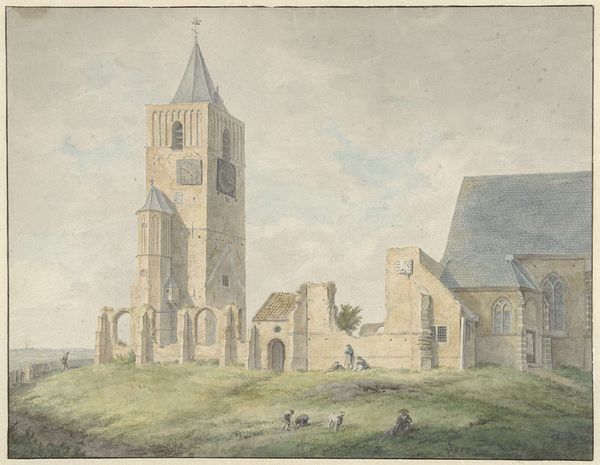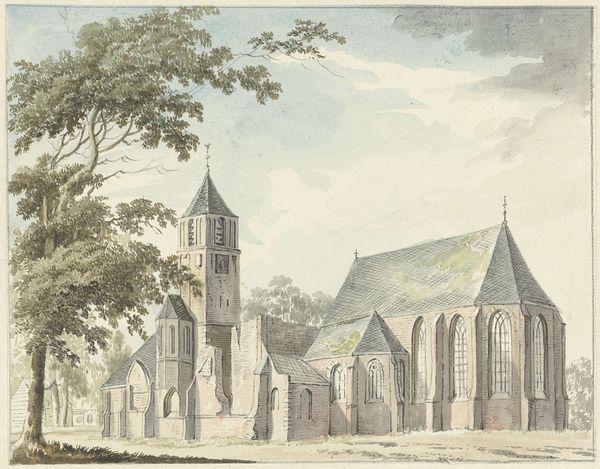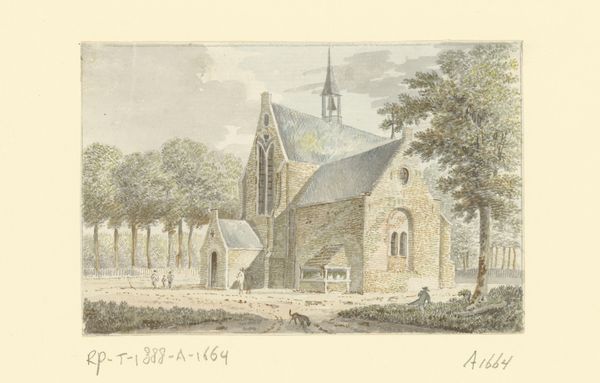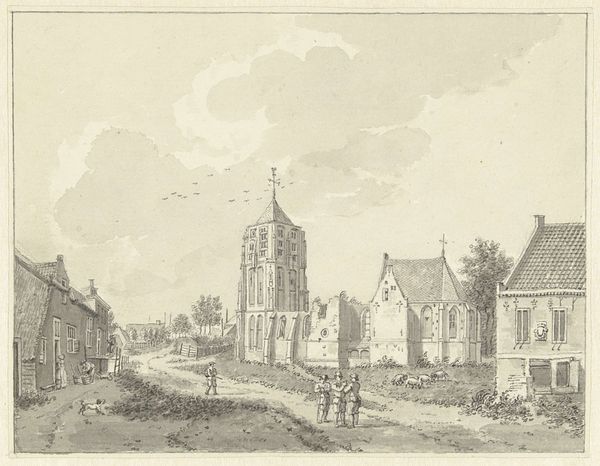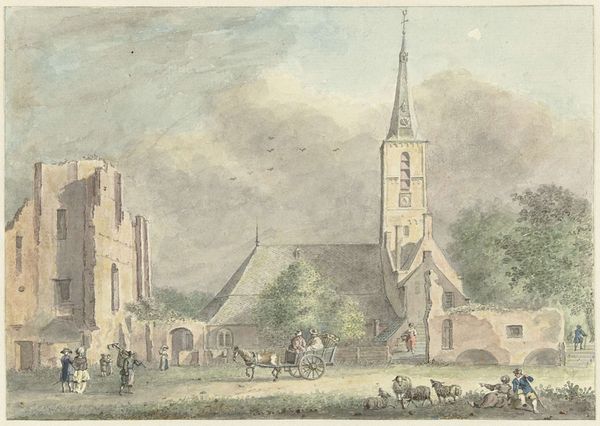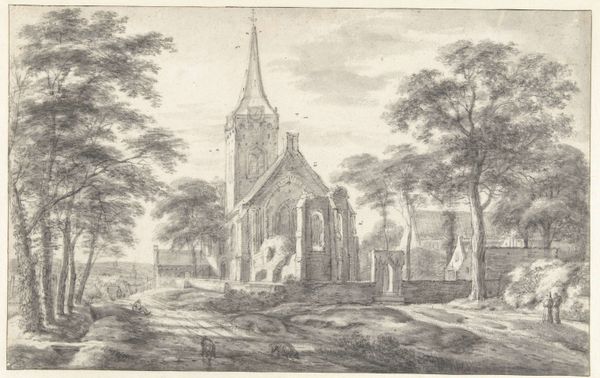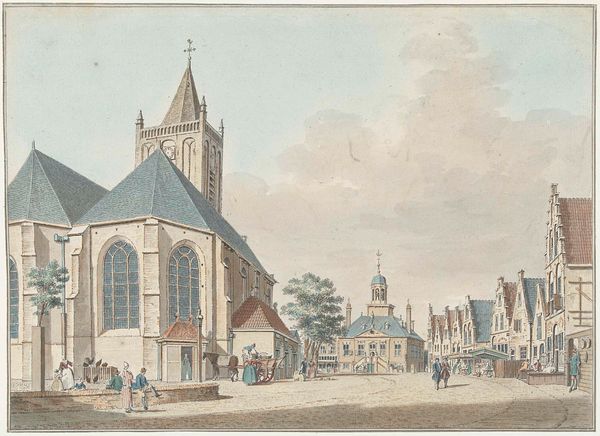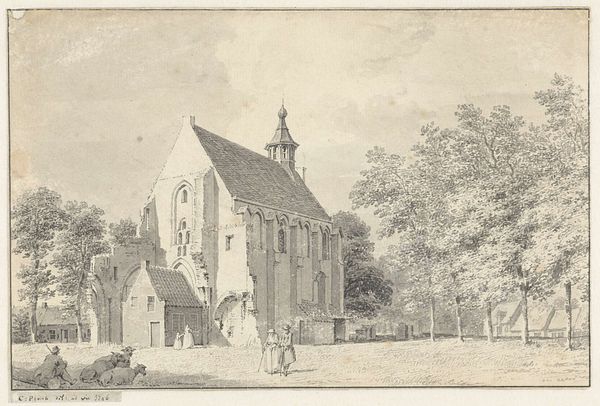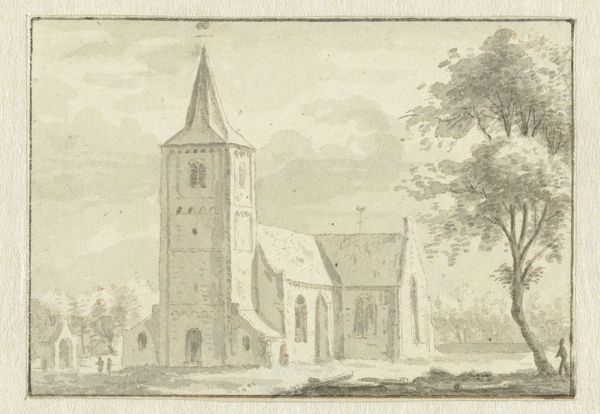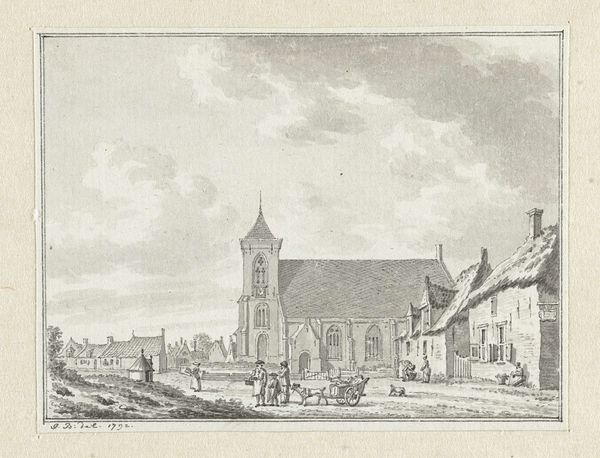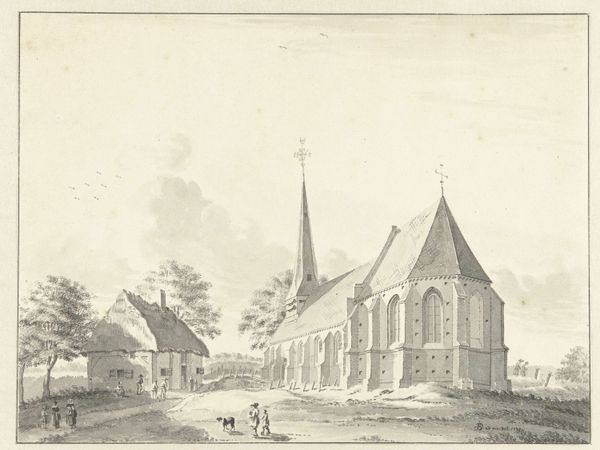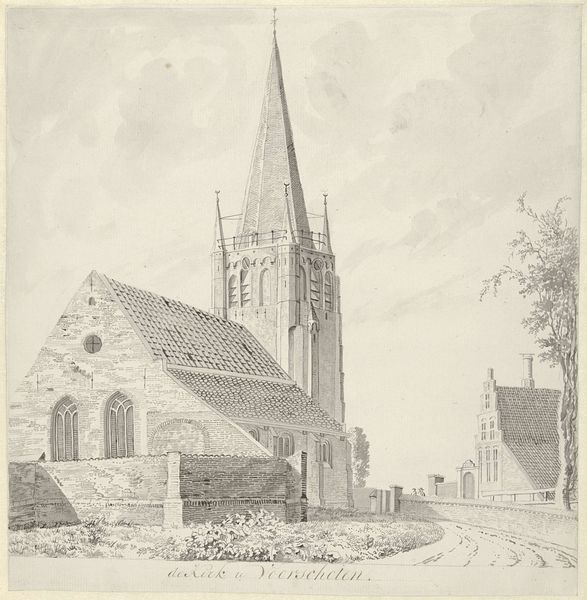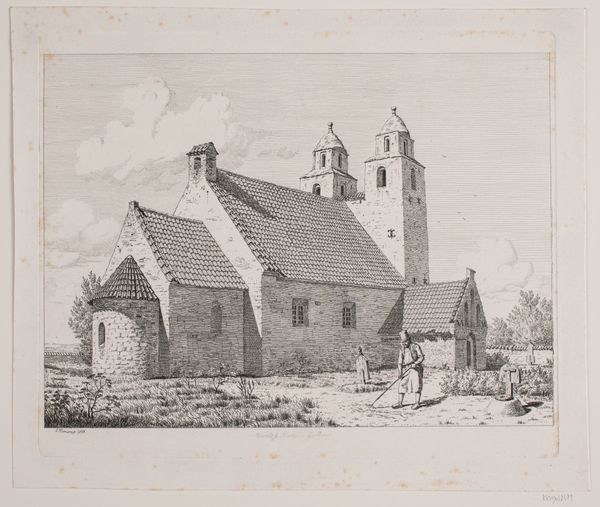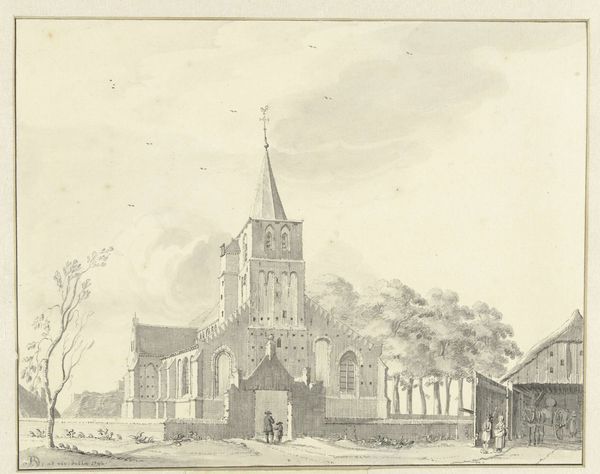
painting, plein-air, watercolor
#
dutch-golden-age
#
painting
#
plein-air
#
landscape
#
watercolor
#
romanticism
#
cityscape
#
watercolour illustration
#
genre-painting
#
watercolor
Dimensions: height 209 mm, width 261 mm
Copyright: Rijks Museum: Open Domain
Editor: This watercolor, "De kerk te Warmond" by Pieter Gerardus van Os, dating between 1786 and 1839, presents the church amidst a pastoral scene. I’m struck by the contrasting elements – the church’s decaying facade juxtaposed with the leisurely scene of the people relaxing in the foreground. What are your initial thoughts on this piece? Curator: What immediately grabs my attention is the representation of power structures and their transformation over time. This wasn’t simply a quaint landscape. How does van Os position the church, traditionally an institution of authority, as a ruin within a burgeoning romantic landscape? Think about the politics of imagery here – is this a commentary on the decline of religious power? Editor: So, you see the ruined church as potentially symbolizing a shift in power dynamics? It's an interesting point that this watercolor depicts power, though more subtly than most history paintings I’ve encountered. Curator: Precisely. And it's crucial to consider the social and cultural context in which van Os was creating. Were there specific socio-political factors at play during the late 18th and early 19th centuries in the Netherlands that might shed light on his intentions? Consider the rise of secularism, perhaps? How would this art be received by the church at that time? How were institutions perceived by the common person? Editor: That reframes the image for me! It isn't just pretty; it prompts questions about social change, religious institutions, and the rise of new philosophical ideas. Curator: Indeed. Art doesn't exist in a vacuum. And the 'public role of art' – it reflects, critiques, and often challenges societal norms and established authority. Editor: Thank you. I will now remember how power is represented and remember to place art into its context.
Comments
No comments
Be the first to comment and join the conversation on the ultimate creative platform.
